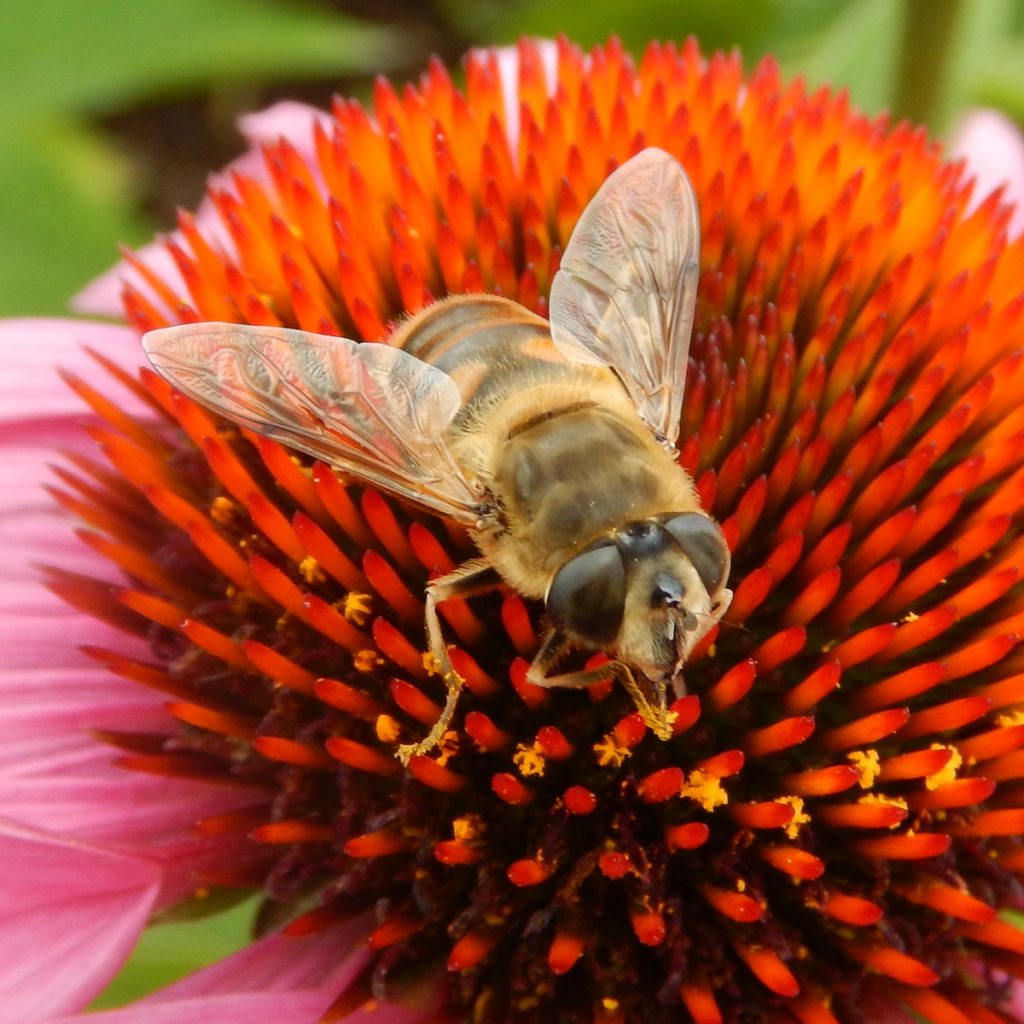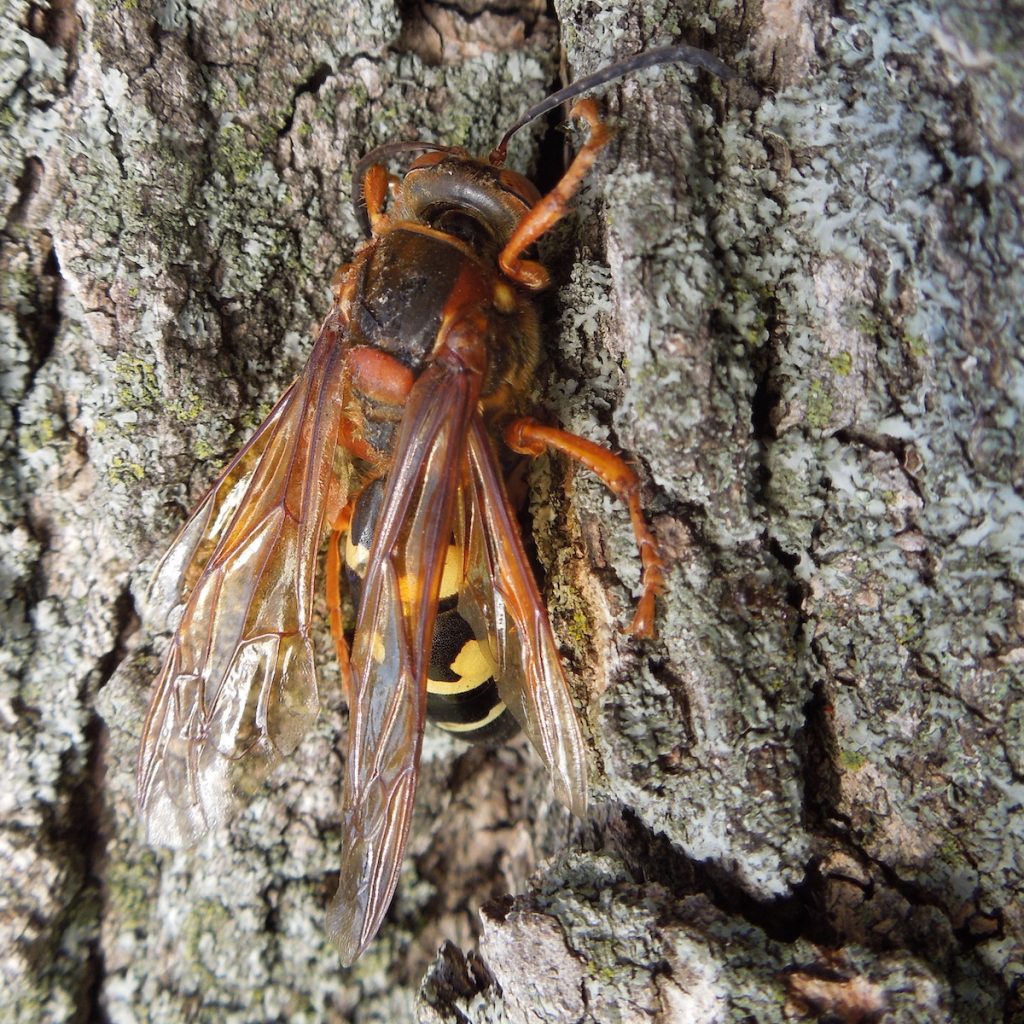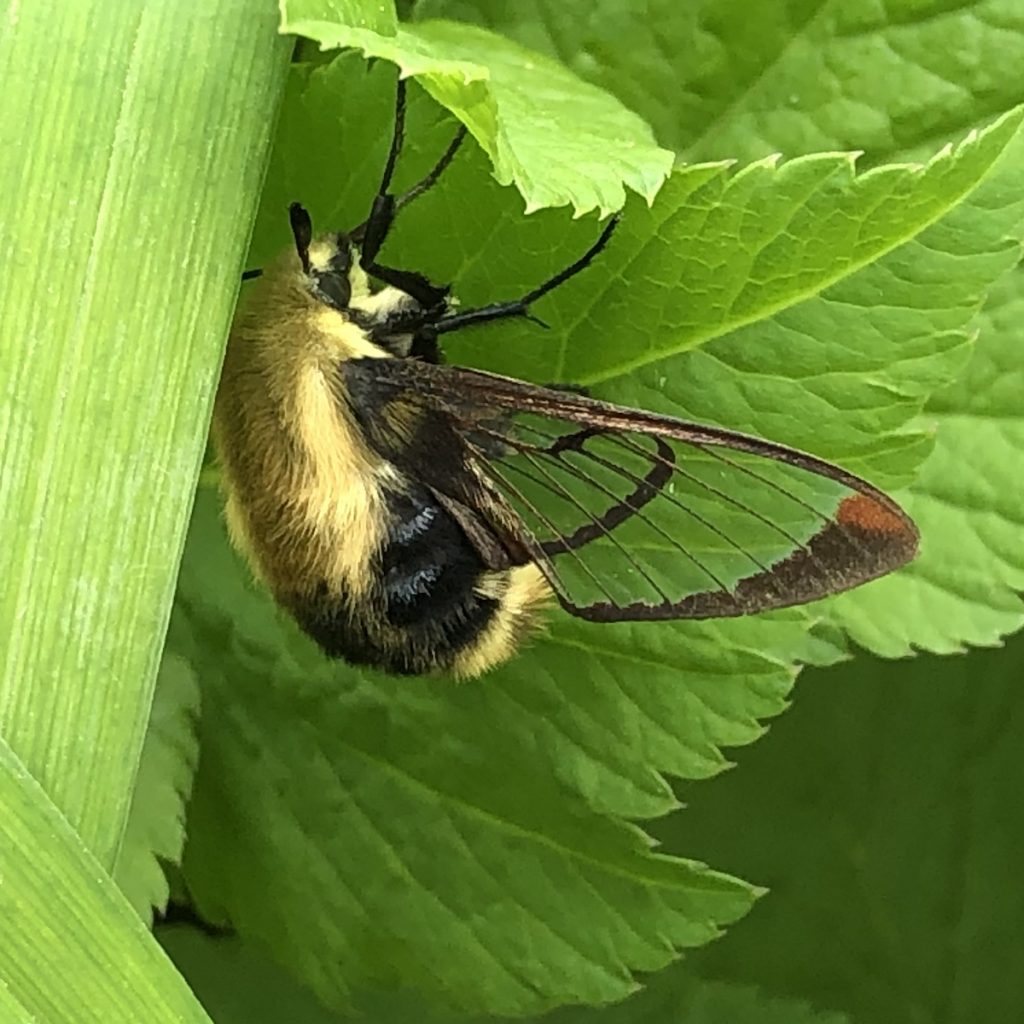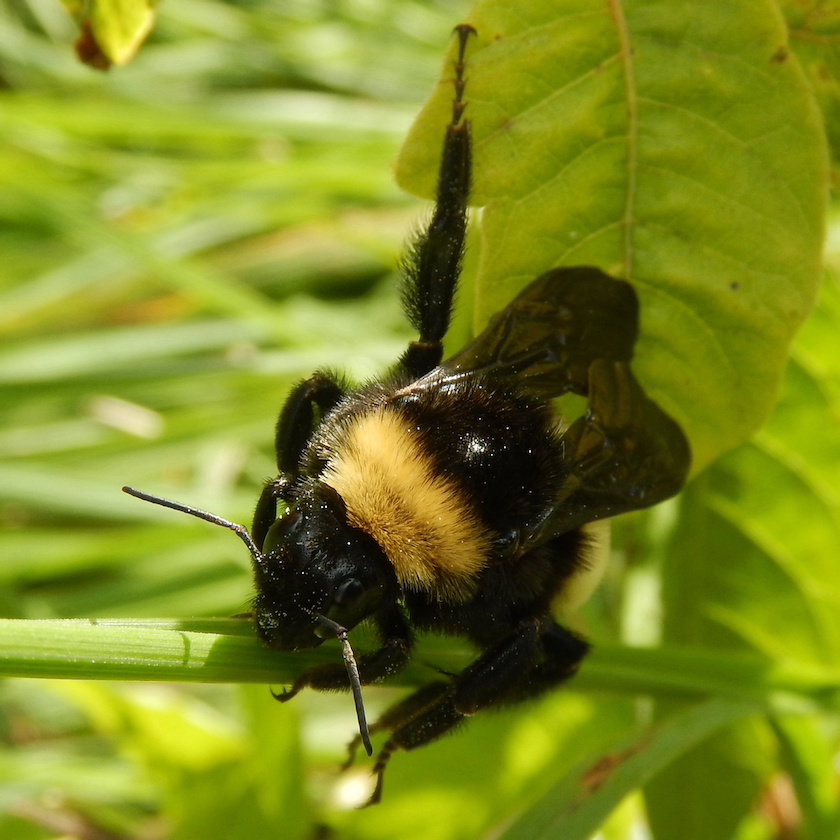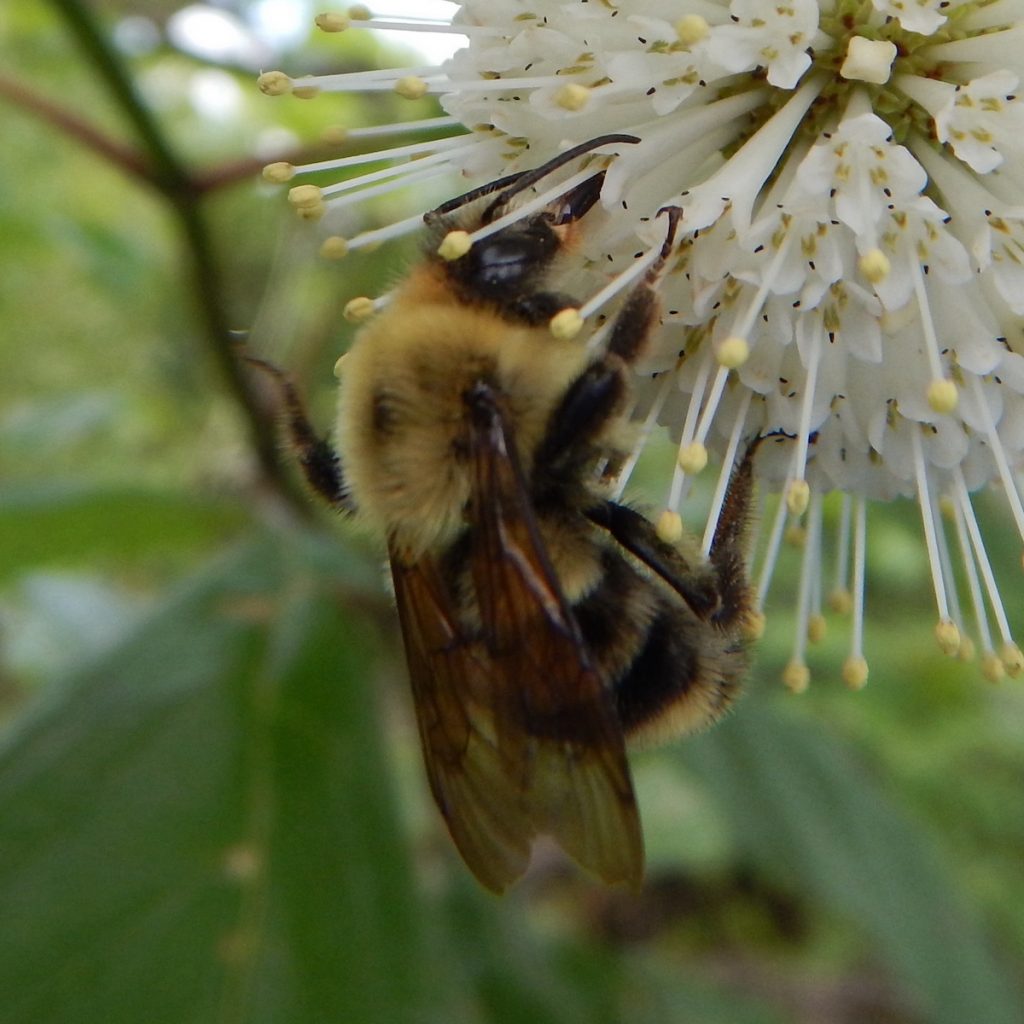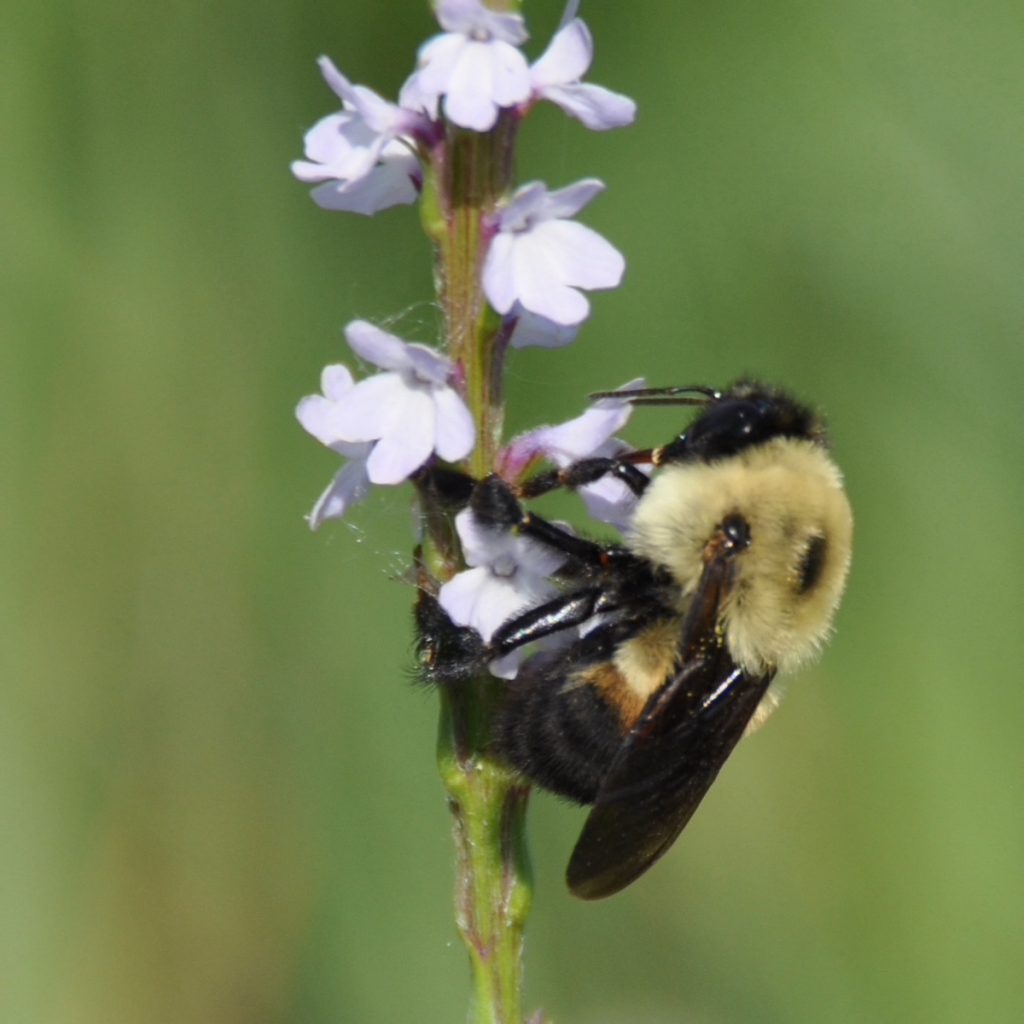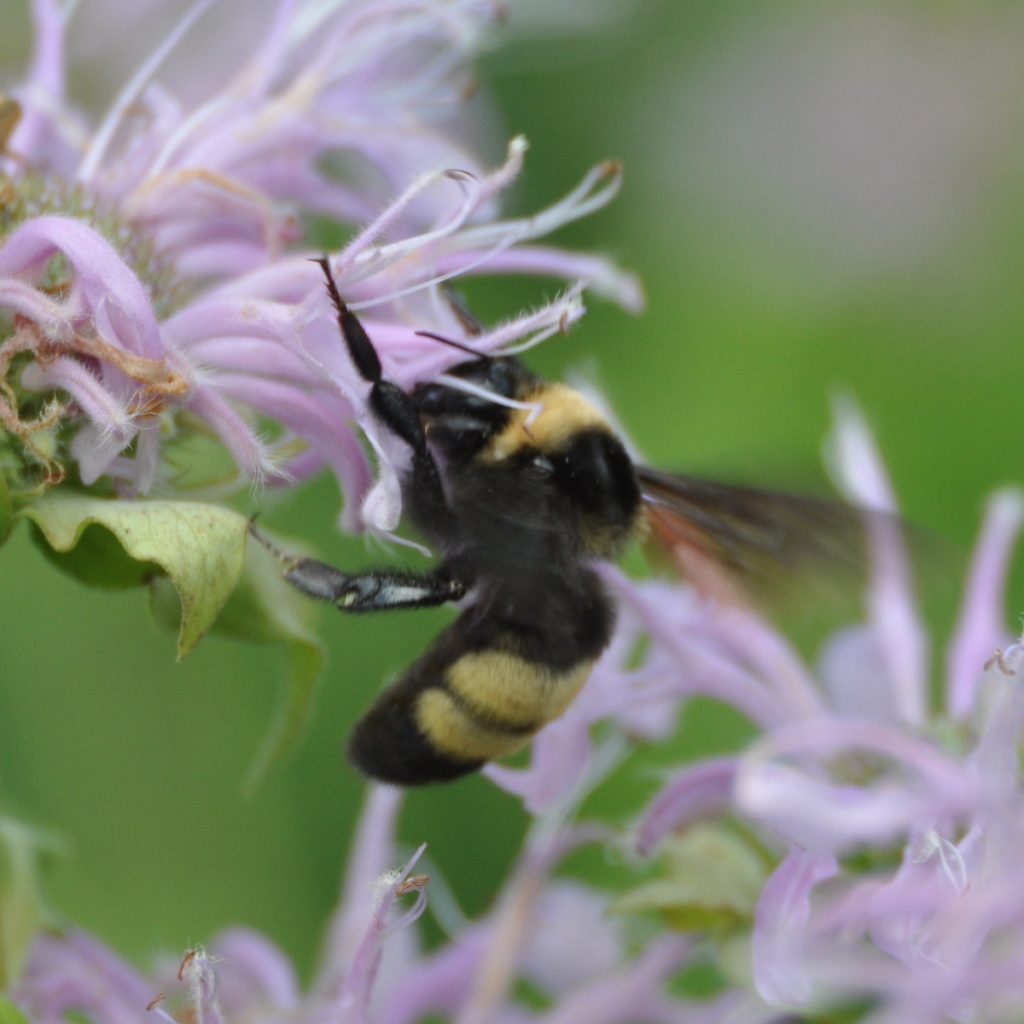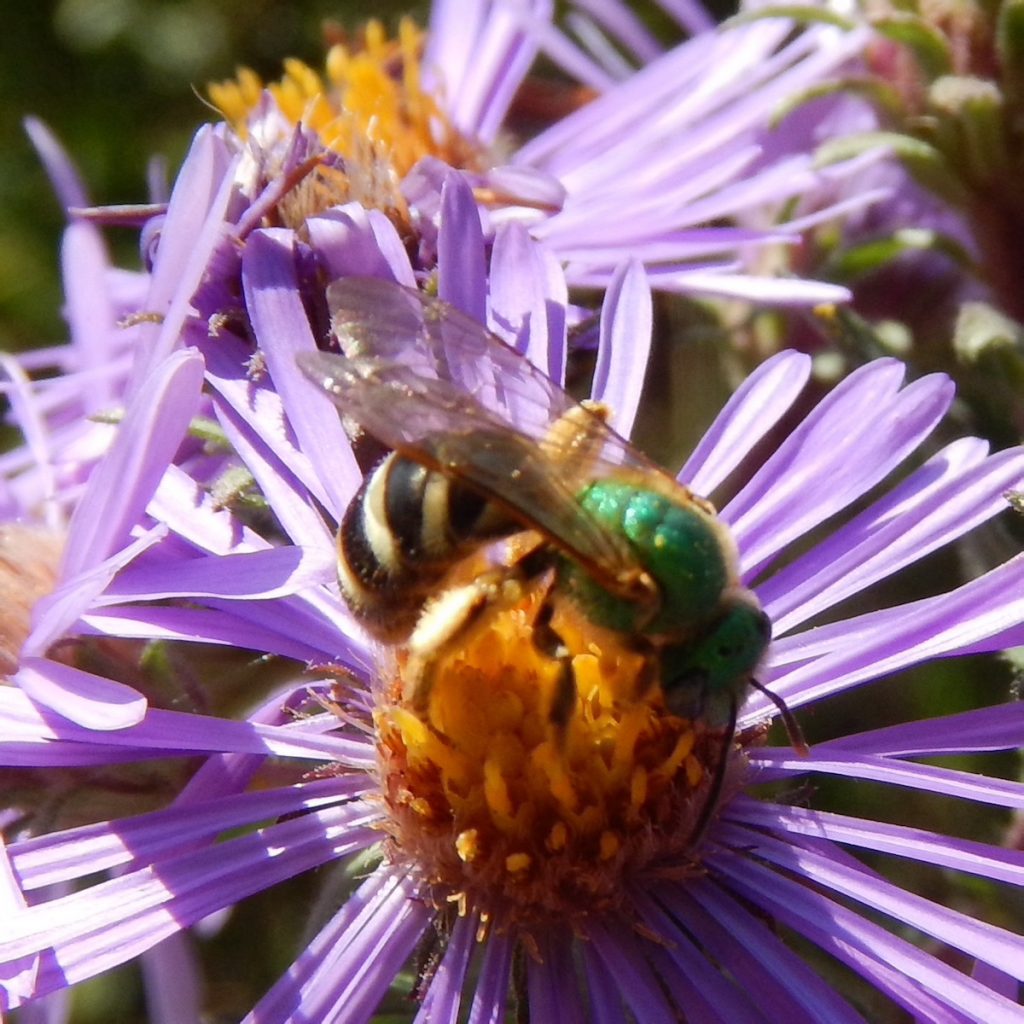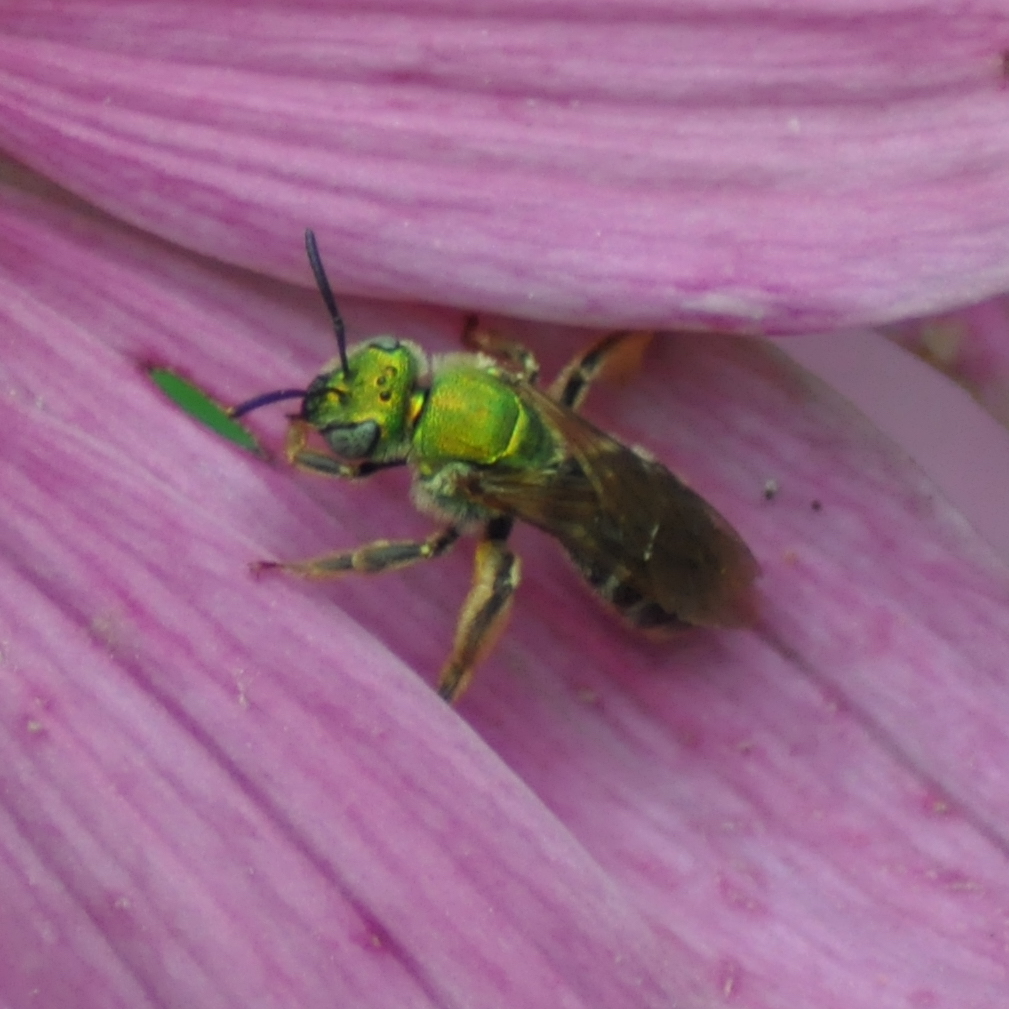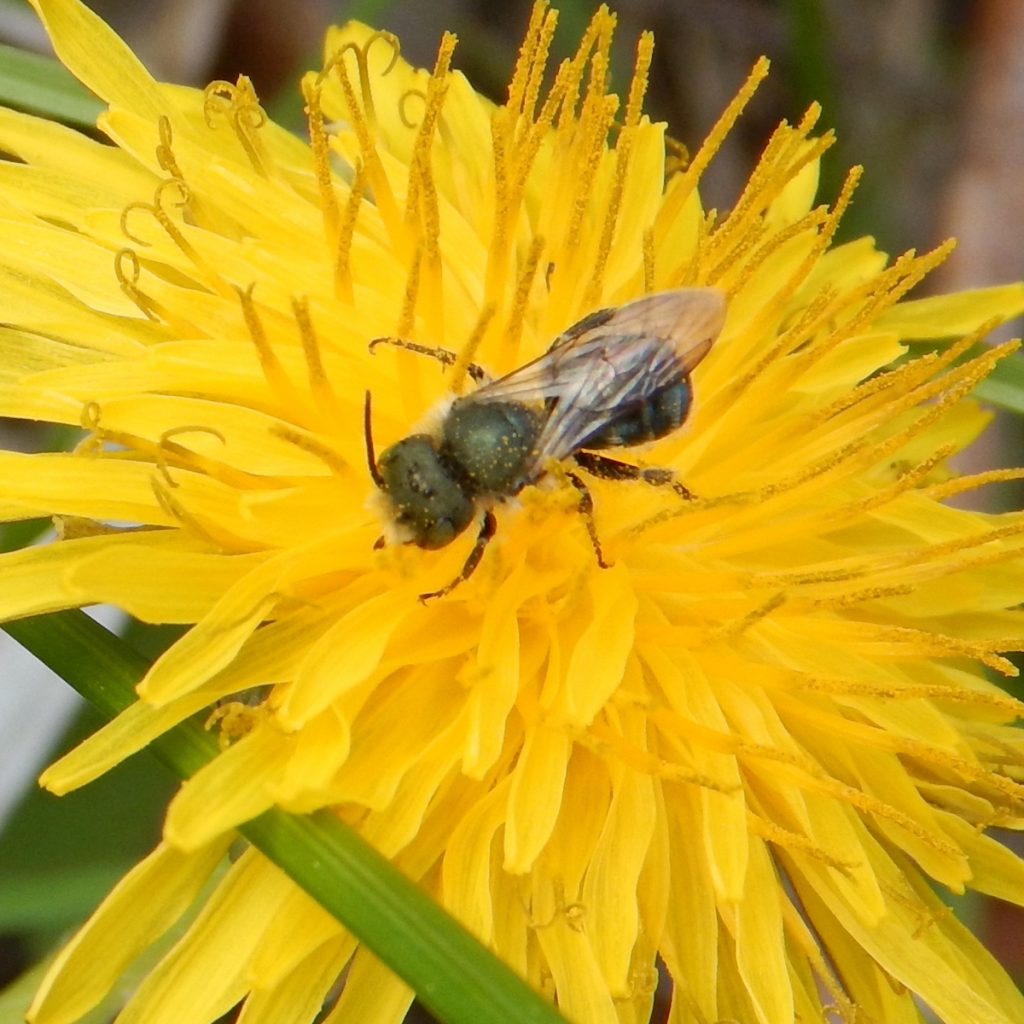When you say “bee” most people think of honey and honey bees, but the European honey bee (Apis mellifera) that many farmers rely on to pollinate their crops is far from the only bee out there. There are more than 4000 species of bee in North America!
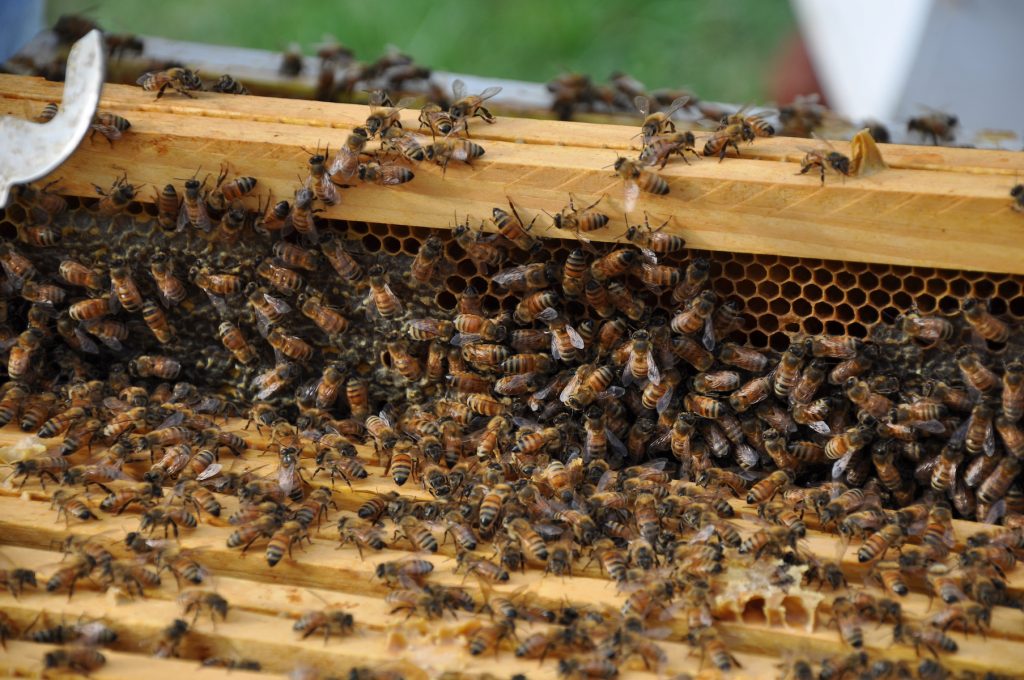
Is it a bee or something else?
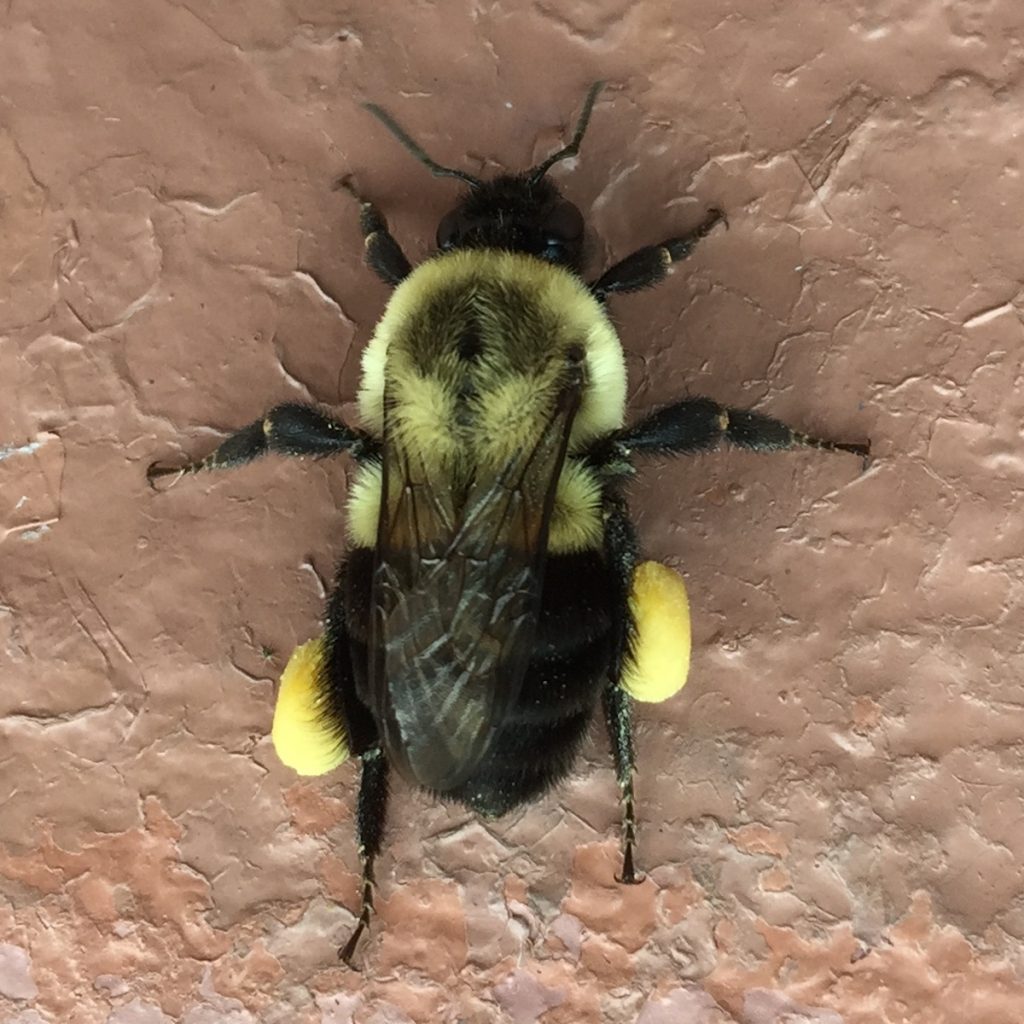
Bees: longish antennae, four wings, hairy body, separated thorax and abdomen
In addition to all of those bees, there are wasps and flies that are often mistaken for bees. While bees, wasps, flies, and many other insects will consume nectar from flowers, bees are primarily pollen eaters, while wasps are meat eaters.
While there are exceptions, the bees, wasps, and flies can typically be distinguished by the following traits:
Bees
4 wings
hairy body
longish antennae
distinct head & thorax
Wasps
4 wings
hairless
long thin legs
narrow waisted
Flies
2 wings
short antennae,
no clear separation of thorax & abdomen
Bees, Wasps, and Ants are all members of the order Hymenoptera and suborder Apocrita.
Social Bees vs Solitary Bees
Another thing that comes to mind with bees is communal living in a hive, but most bee species are solitary.
Some members of the Family Apidae are social insects:
- Honey bees and Bumble bees are the social bees in North America
- Communal nests – bumble bees in soil, honey bees in cavities
- Workers forage for nectar and pollen
- Highly developed corbicula (pollen basket) to transport pollen
Other members of the Family Apidae are solitary bees
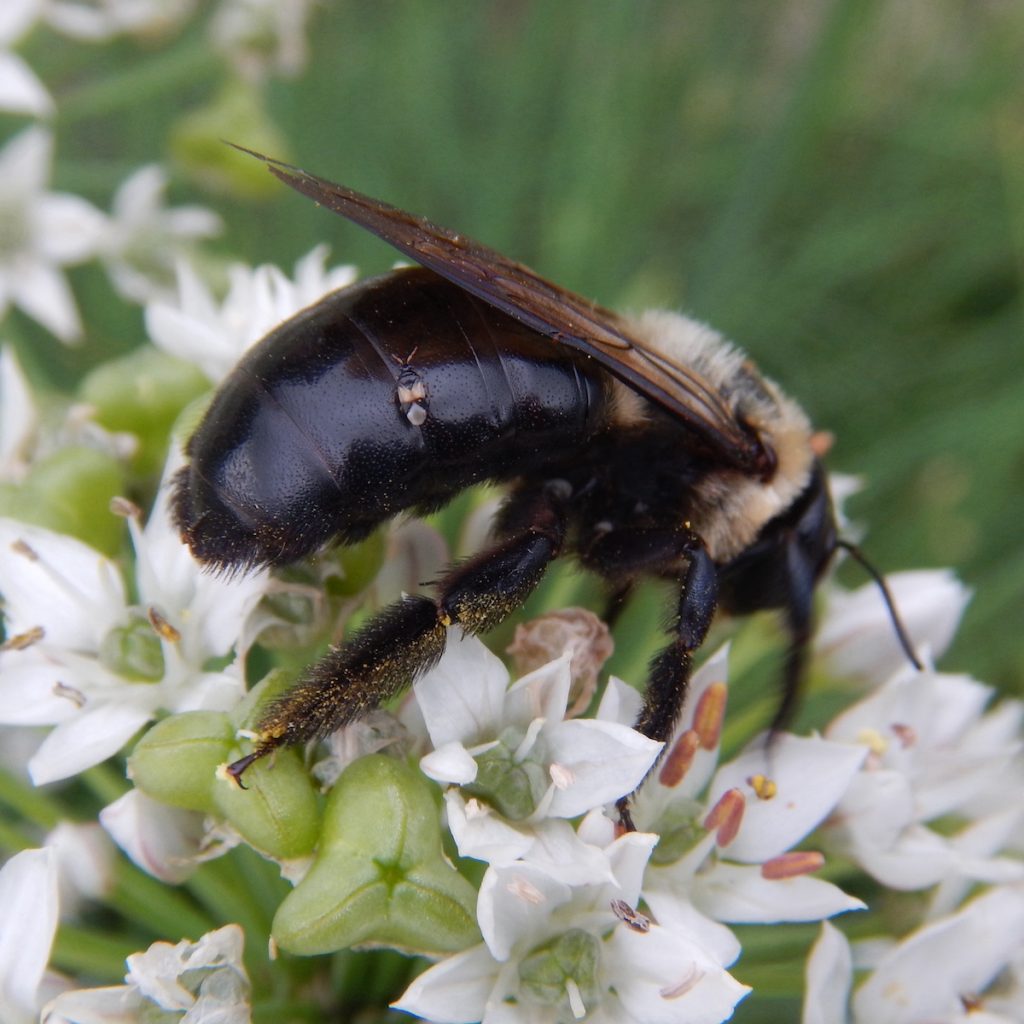
Xylocopa sp.
Carpenter Bee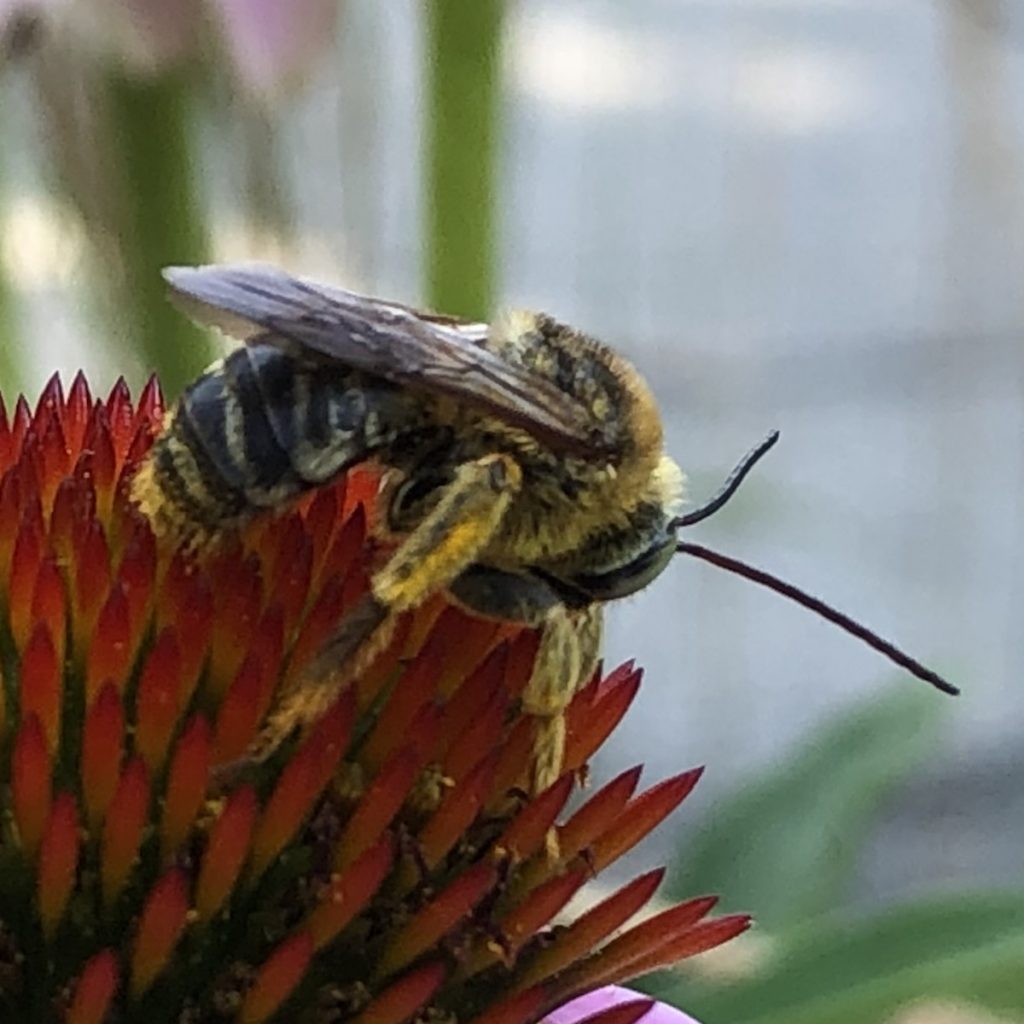
Melissodes sp.
Long-horned Bee
Family Halictidae – Sweat Bees
Often metallic body
Family Andrenidae – Mining bees
Small ground nesting bees
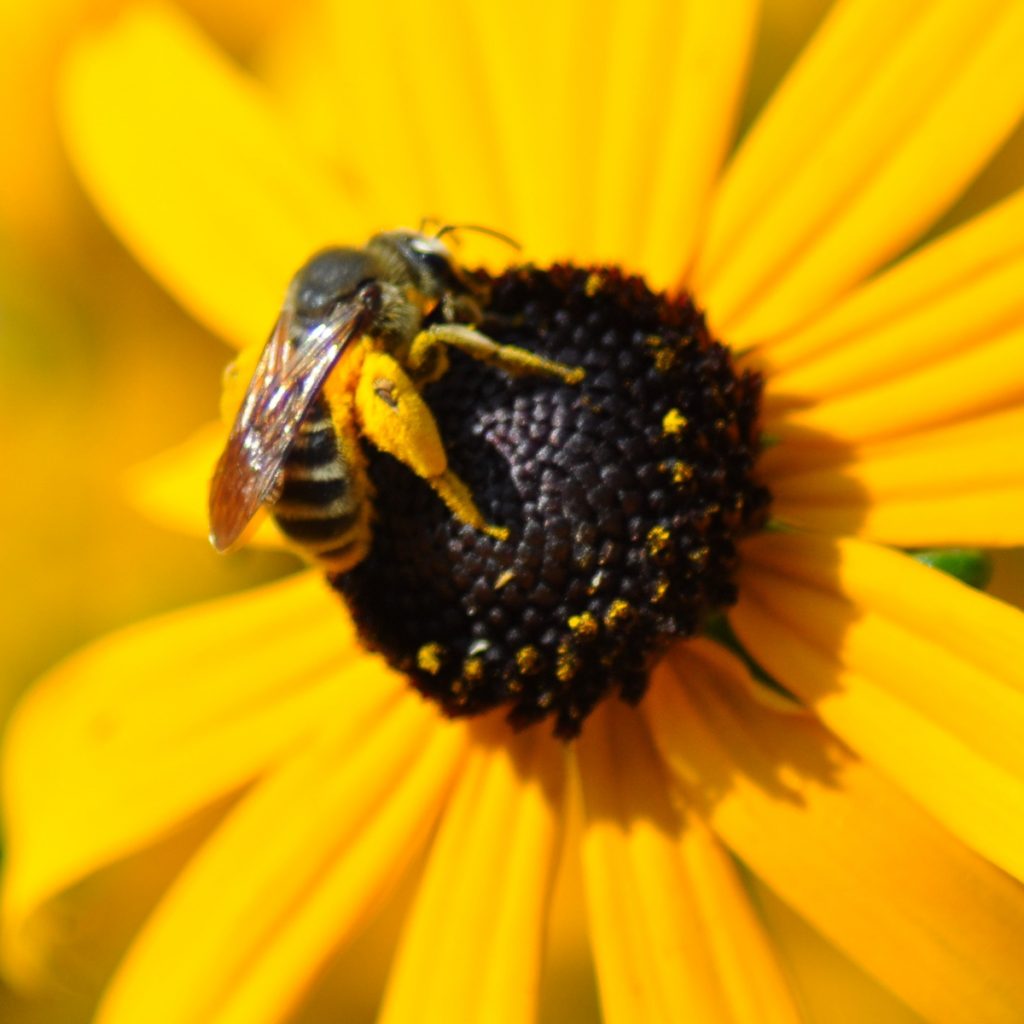
Mining Bee – Andrenidae 
Family Colletidae – Plasterer bees, masked bees
Most species are in South America and Australia
Family Megachilidae – Leafcutting bees
Moderate size
Females have scopa (pollen carrying aparatus) on abdomen rather than legs
The University of Illinois Bee Spotter program has more information on identifying bees here
Learn more about our research on bees and other pollinators
